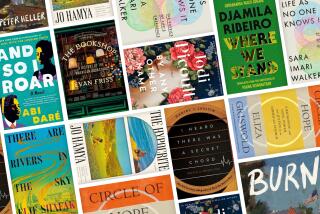The discreet charm of Noon
The new issue of Noon landed last week, and as usual, itâs a compendium of unlikely pleasures: short prose and illustrations that challenge us to think about meaning and narrative. The brainchild of fiction writer Diane Williams, who edits it, Noon has been around since 2000, publishing a single issue annually; it is elegantly designed and curated, a journal that wears its intentions on its sleeve.
And what are those intentions? As with all journals, they vary from issue to issue â although less so here, perhaps, since Noon relies on regular contributors. This most recent number features Clancy Martin, Deb Olin Unferth and the inimitable Lydia Davis, whose deft and beautiful âNot Interestedâ is a masterpiece of indirect depth.
âIâm simply not interested in reading this book,â Davis begins the story, which like so much of her work starts out deceptively simple before taking us places we donât expect. âI was not interested in reading the last one I tried, either. Iâm less and less interested in reading any of the books I have, though they are reasonably good, I suppose.â
The subject here is not reading but boredom, the slow creep of mundane routine. How do we deal with it, âNot Interestedâ means to ask us, the constant repetition, the chores that need to be done and done again?
âThese days,â Davis writes, âI prefer books that contain something real, or something the author at least believed to be real. I donât want to be bored by someoneâs imagination.â Then she turns the story around, to her imagination: â[I]tâs true that Iâm also bored, sometimes, by my own dreams.â
To some extent, âNot Interestedâ can be read as centerpiece and outlier to the issue â the former because Davis is such a vivid writer, and the latter because she does not deal with love. Many of the other pieces do, forming a tapestry of stories in which friends and lovers, parents and children circle each other like satellites, connecting in only the most elliptical ways.
In âCat,â Brandon Hobson portrays a 15-year-old boy, fresh from a shelter, who goes to a womanâs apartment, where they sit, barely touching, until the situation turns more intimate and he gets up to leave. Anya Yurchyshynâs âBangâ revolves around a group of teenagers as they discuss how much or how little their parents care for them: âThey are never going to come,â one says.
These are oblique stories, stories that exist in the interior, getting at the things we know but do not know we know.
Or, as Kim Chinquee puts it in âSteakhouse,â which evokes, in two short pages, a surreal dinner in a restaurant, as a young woman studies her boyfriend and his parents, recognizing them less and less: âI work hard on my eyelids. Keeping them open. ⌠I start to pick at my polish, thinking of my airline ticket, all the things I have to do before leaving and then coming back again.â
ALSO:
Mark Twainâs âAdvice to Little Girlsâ
âThe Wonderful Wizard of Ozâ gets an edgy new look
The best job inquiry letter ever: Eudora Welty to the New Yorker
More to Read
Sign up for our Book Club newsletter
Get the latest news, events and more from the Los Angeles Times Book Club, and help us get L.A. reading and talking.
You may occasionally receive promotional content from the Los Angeles Times.







